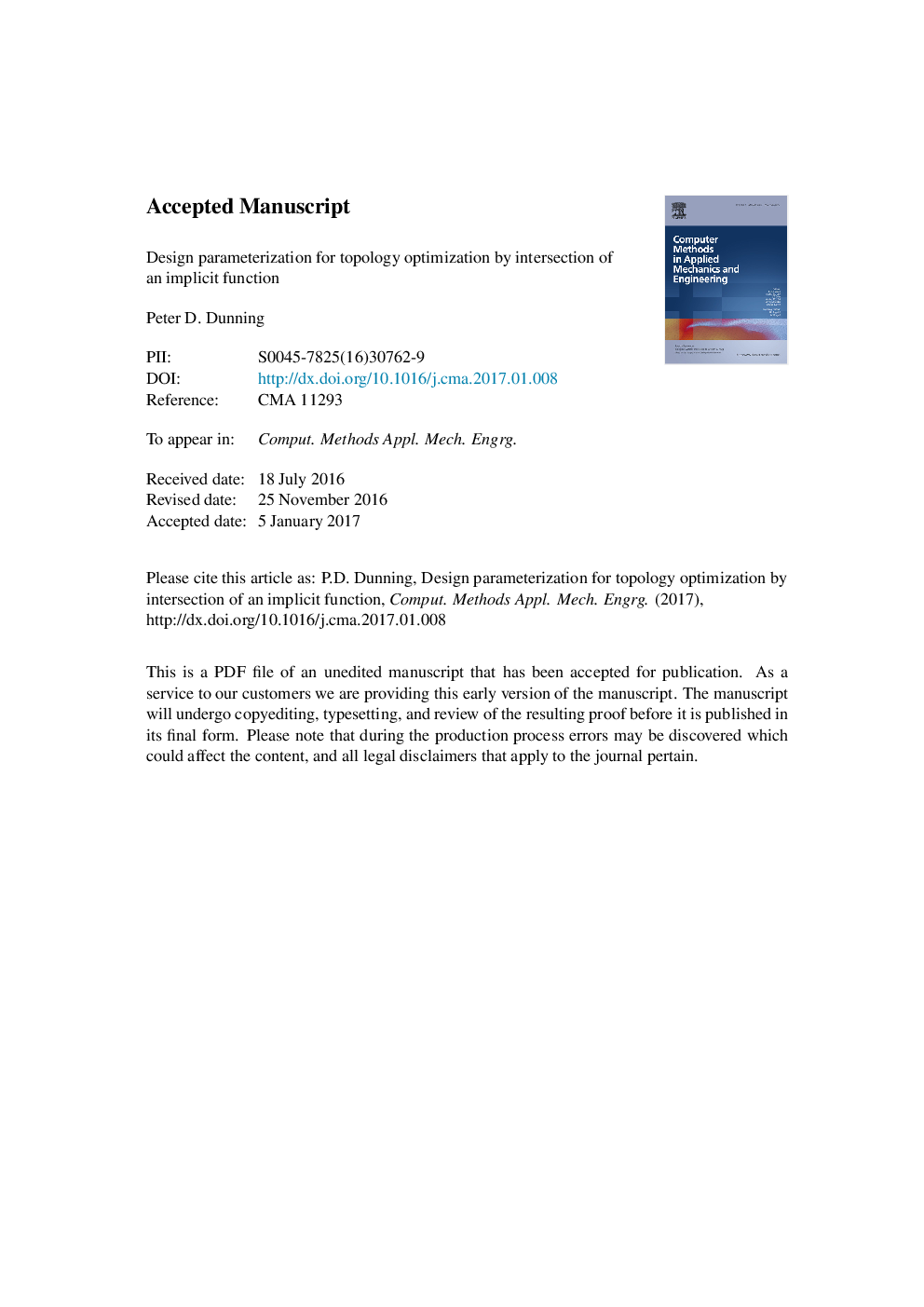| Article ID | Journal | Published Year | Pages | File Type |
|---|---|---|---|---|
| 4964136 | Computer Methods in Applied Mechanics and Engineering | 2017 | 38 Pages |
Abstract
This paper introduces a new approach to topology optimization where the structural boundary is defined by the intersection of an implicit signed-distance function and a cutting surface. The cutting surface is discretized using finite element shape-function polynomials and the nodal values become the design variables during optimization. Thus, the design parameterization is separated from the analysis discretization, which enables a reduction in the number of design variables, compared with methods that use element-wise variables. The proposed method can obtain solutions with smooth boundaries and the parameterization allows solution by standard optimization methods. Several 2D and 3D examples are used to demonstrate the effectiveness of the method, including minimization of compliance and complaint mechanism problems. The results show that the method can obtain good solutions to well-known problems with smooth, clearly defined boundaries and that this can be achieved using significantly fewer design variables compared with element-based methods.
Related Topics
Physical Sciences and Engineering
Computer Science
Computer Science Applications
Authors
Peter D. Dunning,
